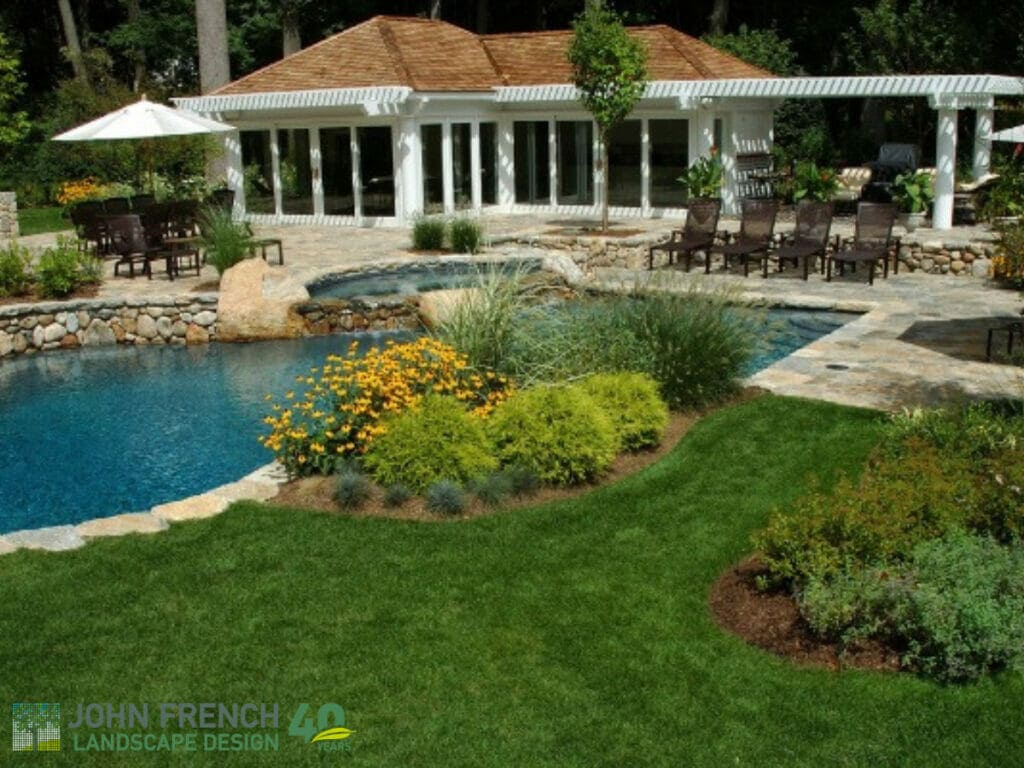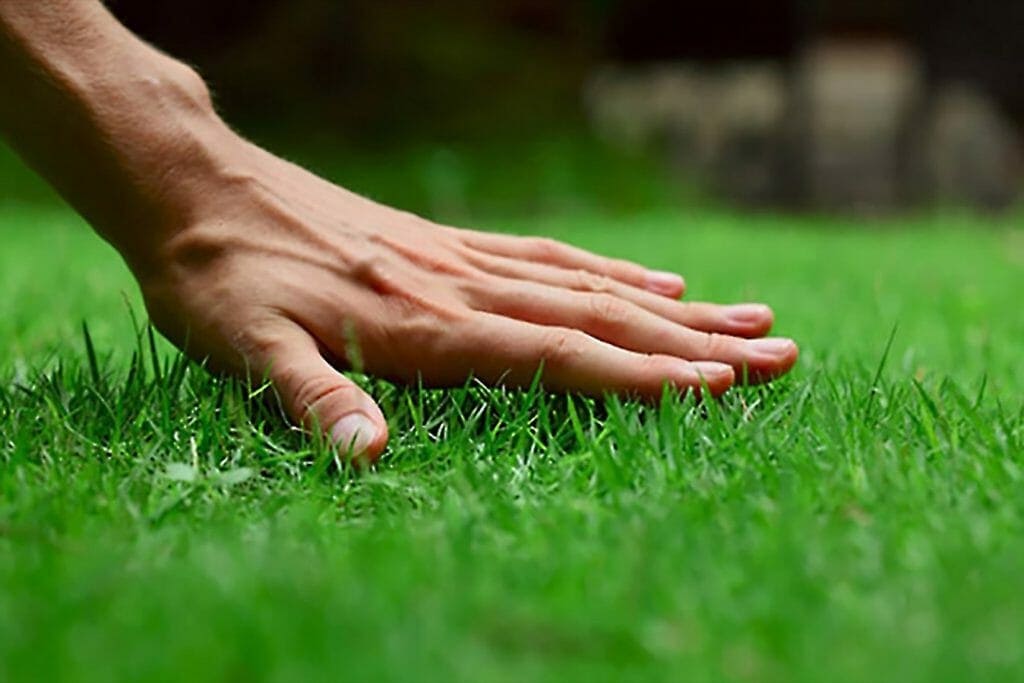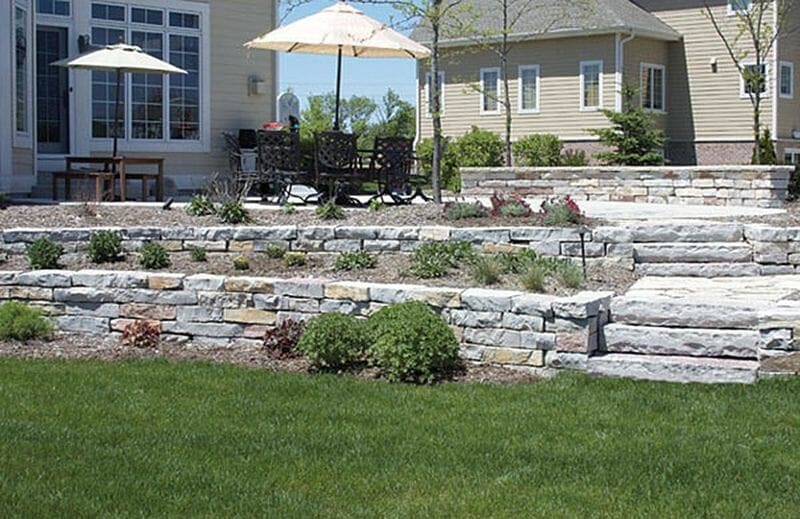A pool is a great addition to any home, and the right landscaping can make it even more enjoyable. There are a few things to consider when choosing plants for around your pool. First, you want to select plants that are not going to drop a lot of leaves or flower petals into the water. Second, you need to choose plants that can tolerate being in close proximity to chlorine. Third, you want to select plants that will provide some shade and shelter from the sun. Once you have considered these factors, you can start to narrow down your options. Some good choices for poolside landscaping include palms, bromeliads, and drought-tolerant succulents. With a little bit of planning, you can create a beautiful and functional space around your pool.
In order to achieve this, it is important to carefully select the landscaping features that you will put in place. Decorative elements such as statues, fountains, and gardens can add visual interest, while chaise lounges and umbrellas provide essential shading. Pathways can help to define the space and make it more navigable, while lighting can create a inviting atmosphere for nighttime swimming. By careful planning, you can create a poolscape that is both stylish and functional.
What should you not plant around a pool?
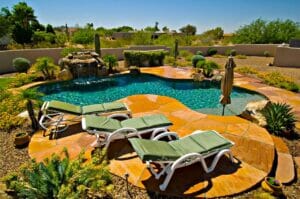
In addition, some plants are poisonous if ingested, so you need to be careful if you have small children or pets. With a little bit of research, you can easily find out which plants are best to avoid. Here are some of the most common problems plants:
• Bamboo – This fast-growing grass can quickly spread out of control and its roots can damage underground pipes.
• Fir trees – Needles from these evergreen trees can fall into the pool and clog the filter. In addition, the sap can be poisonous if ingested.
• Oleander – All parts of this plant are toxic if ingested, so it is best to keep it away from small children and pets.
• Ivy – Ivy can quickly grow out of control and its roots can damage concrete surfaces. The leaves can also drop into the pool and clog the filter.
Is grass around a pool a good idea?
Many pool owners debate whether or not to have grass around their pool. There are pros and cons to both choices. On one hand, grass can provide a softer surface around the pool, making it more comfortable to walk on and less likely to cause slips and falls. Grass can also help to keep the area around the pool clean by trapping dust and debris. On the other hand, grass requires regular maintenance, including watering, fertilizing, and mowing. It can also be difficult to keep grass clean in an area that is regularly exposed to chlorine and other pool chemicals. Ultimately, the decision of whether or not to have grass around a pool depends on personal preferences and how much time and effort the owner is willing to put into upkeep. Even if the pool is surrounded by concrete or stone, adding some green grass can help to soften the appearance and make the area more inviting. So if you’re considering whether or not to add grass around your pool, the experts say it’s a good idea.
How can I make my pool more attractive?
A pool is a great addition to any home, providing a place to cool off on a hot day and exercise in the water. However, a plain pool can be quite uninviting. There are a few simple things you can do to dress up your pool and make it more attractive. One way to add interest to your pool is to incorporate different types of lighting. Underwater lights can create a beautiful effect, and solar lights can help save on energy costs. You can also use lanterns or string lights around the perimeter of the pool to create a softer ambiance.
If you have a concrete or liner pool, another way to add interest is with tile or stone accents. These can be used to create patterns or borders around the edge of the pool. You can also use stone pavers to create a deck area around the pool. This will provide a place for lounge chairs and umbrellas, and will give the area a more polished look. With a little bit of creativity, you can transform your pool into an inviting oasis that you and your family will enjoy for many years to come.
What is better pavers or travertine?
Both pavers and travertine are popular choices for landscaping, but it can be difficult to decide which material is right for your project. Pavers are made of concrete, brick, or stone, and they are typically less expensive than travertine. Pavers are also very durable and easy to maintain, making them a good choice for high-traffic areas. However, pavers can be more difficult to install than travertine, and they may require professional help. Travertine is a natural stone that is often used for patio and walkway construction. It has a distinctive appearance, and it is available in a wide range of colors. Travertine is also cooler to the touch than concrete, making it a good choice for areas that get direct sunlight. However, travertine can be more expensive than pavers, and it may require special sealants to protect it from weathering. Ultimately, the best choice for your project will depend on your budget and your personal preferences.
Should you plant trees around a pool?
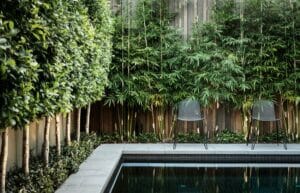
Ultimately, whether or not to plant trees around a pool is a personal decision. In general, deciduous trees are a good choice for planting around pools. They provide shade in the summer months, helping to keep the water cool. In the winter, they allow sunshine to reach the pool, helping to warm the water. Evergreen trees can also be a good choice, but they should be placed carefully to avoid blocking sunlight or creating too much shade. Ultimately, the best tree for planting around a pool is one that will thrive in your particular climate and provide the right amount of shade for your needs.
Is decking around a pool a good idea?
Is decking around a pool a good idea? It’s a question that many homeowners face when they are planning to install a new pool. There are pros and cons to consider. On the plus side, decking can provide a spacious area for entertaining and relaxing poolside. It also helps to create a defined boundary for the pool, which can be important for safety reasons. On the downside, decking around a pool can be expensive and require regular maintenance. In addition, it is important to choose materials that will not be too slippery when wet. With all of these factors to consider, it’s no wonder that many homeowners are undecided about whether or not to install decking around their pool. Ultimately, it is a personal decision that should be based on individual needs and preferences.
One of the main advantages of decking around a pool is that it provides a safe and secure area for swimming and sunbathing. This can be especially important if you have young children or pets who need to be kept away from the water. Decking can also help to create a more stylish and sophisticated look for your pool area.
However, there are also some disadvantages to consider. One of the main drawbacks is that decking can be expensive to install and maintain. Decking also needs to be regularly cleaned and sealed to prevent it from becoming slippery and dangerous. In addition, decking around a pool can occasionally trap leaves and other debris, which can then clog the filter and pumps.
Overall, whether or not decking around a pool is a good idea depends on your individual circumstances. If you have the budget and are willing to put in the effort, then decking can provide a beautiful and functional addition to your pool area. However, if you are not able or willing to maintain it properly, then it might not be the best option for you.

